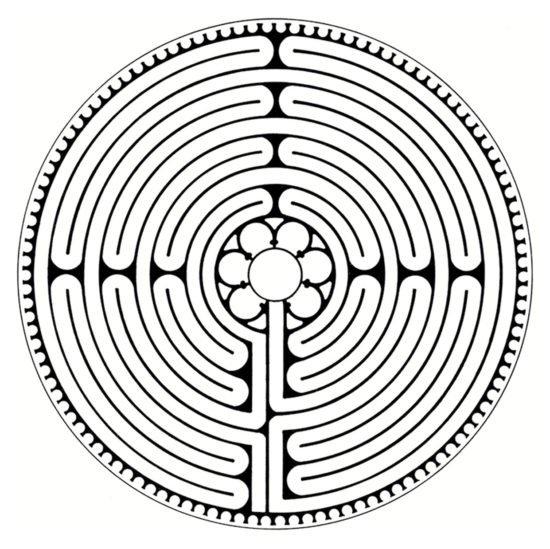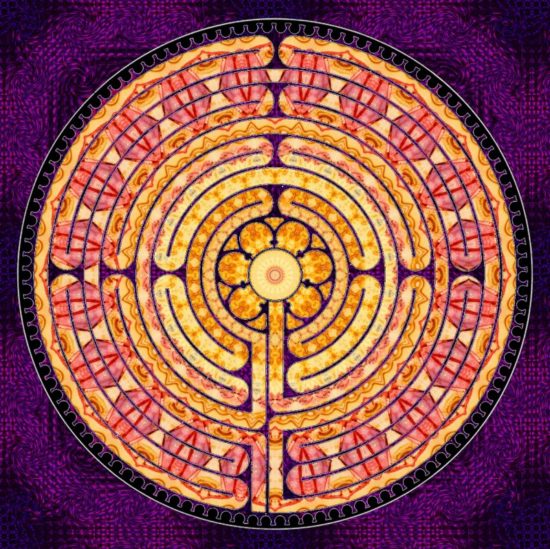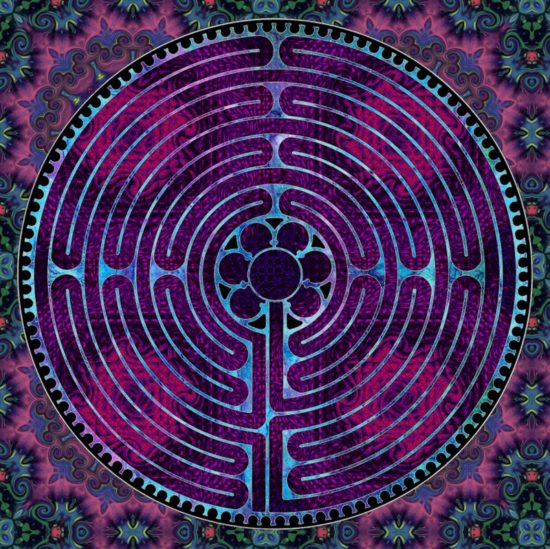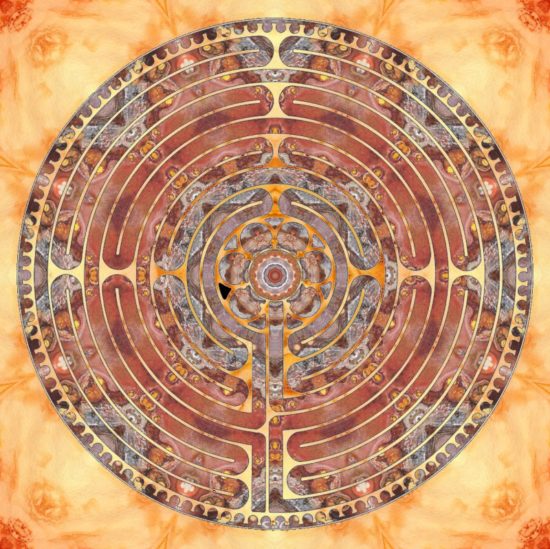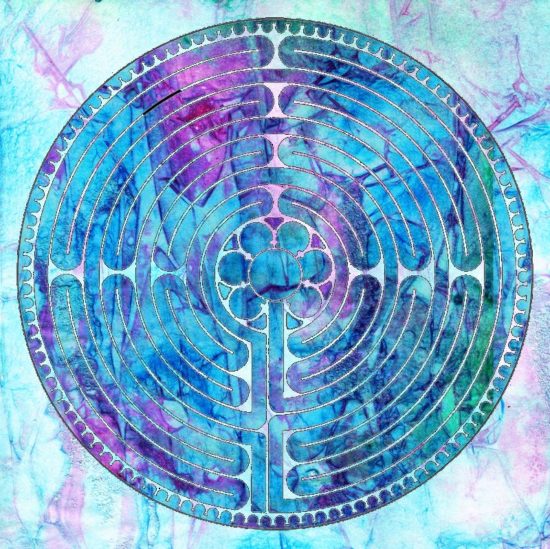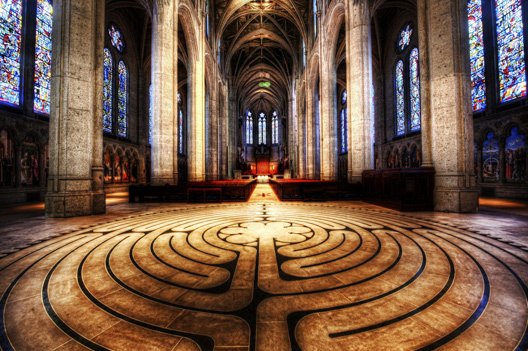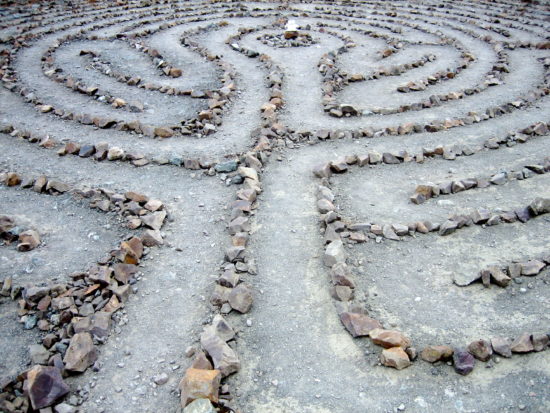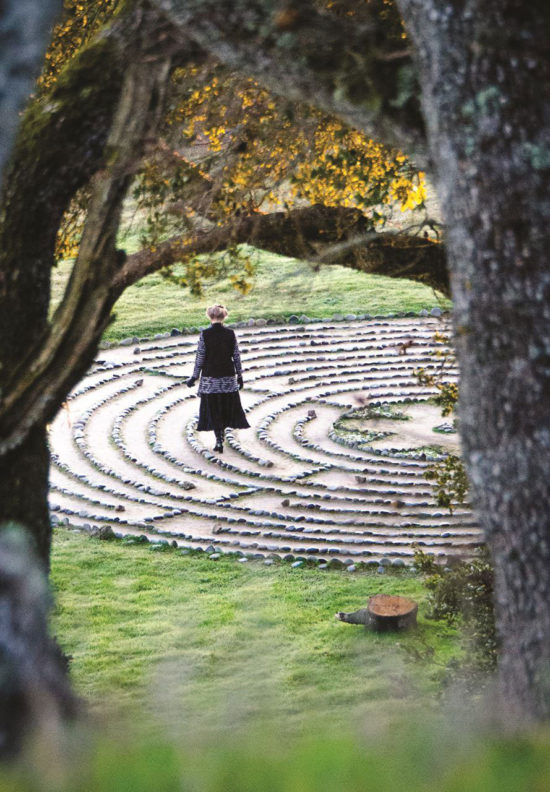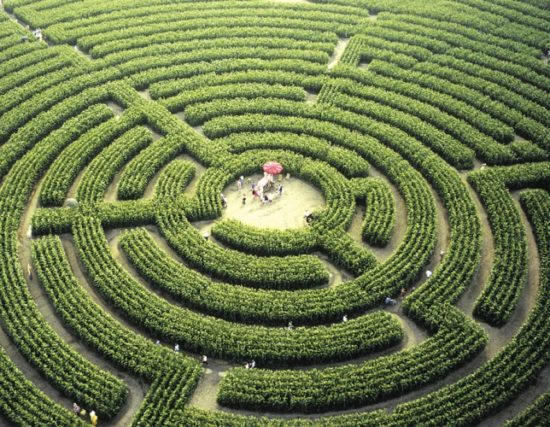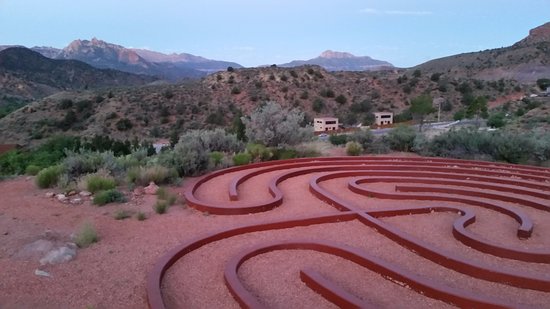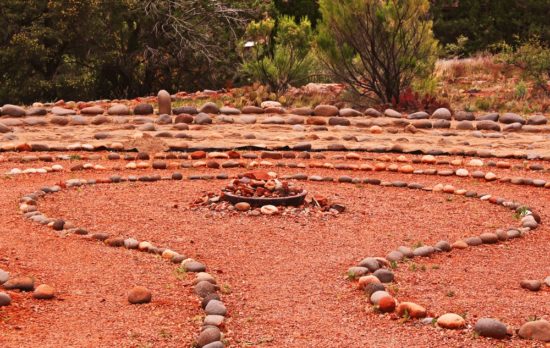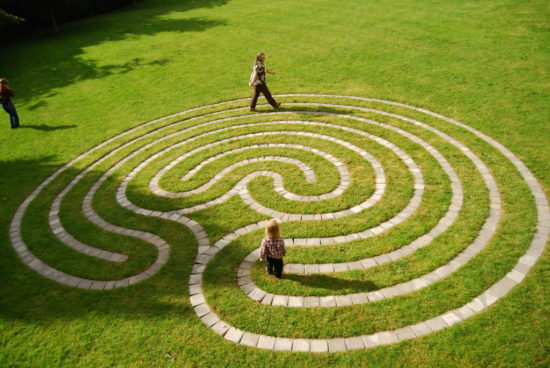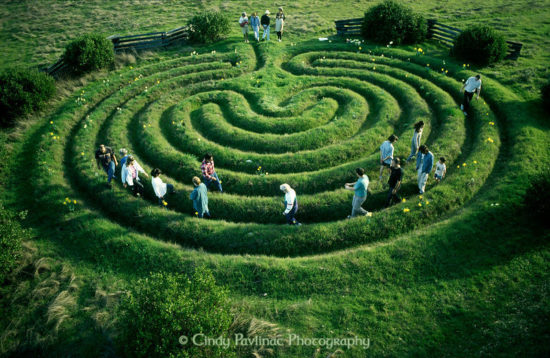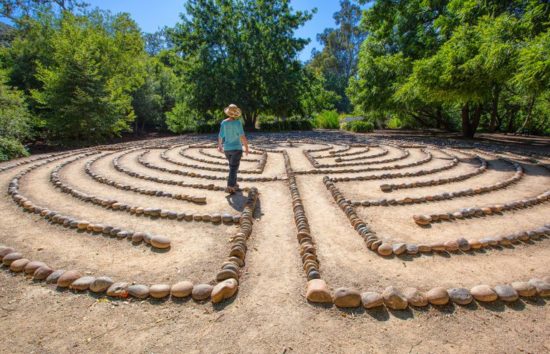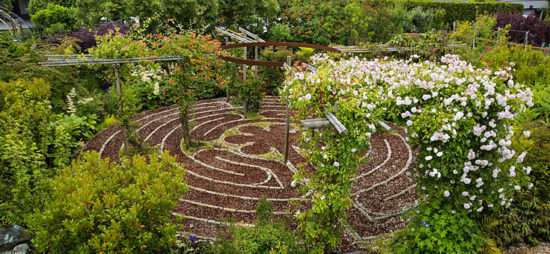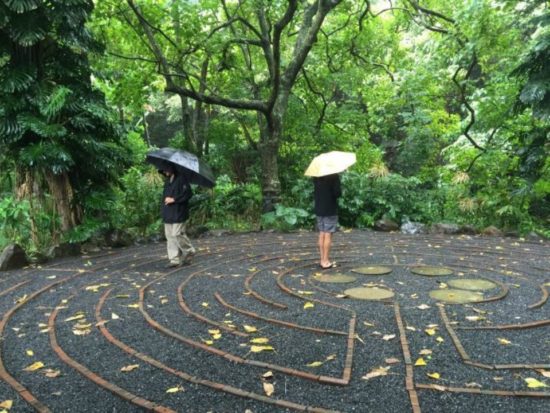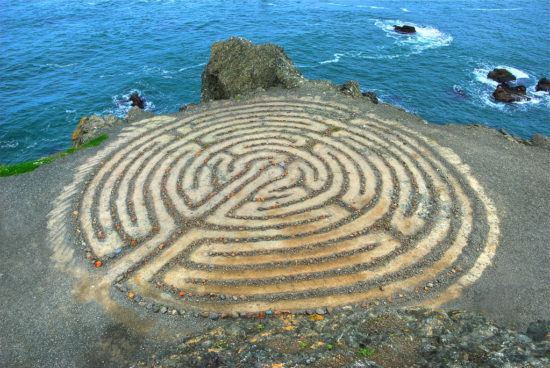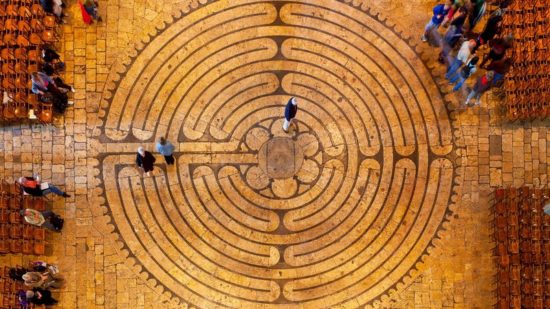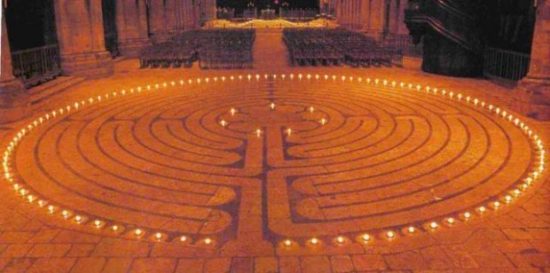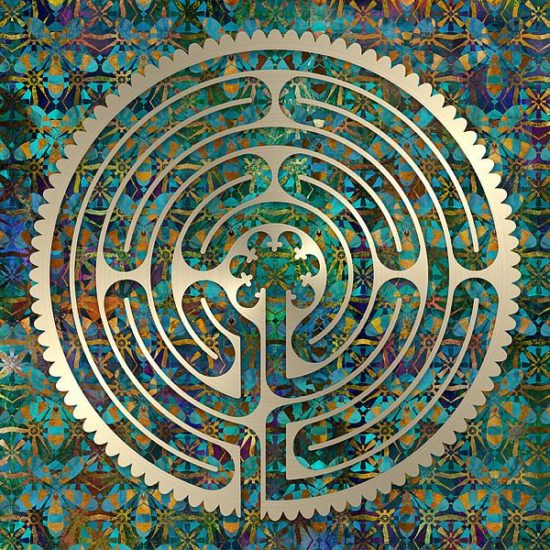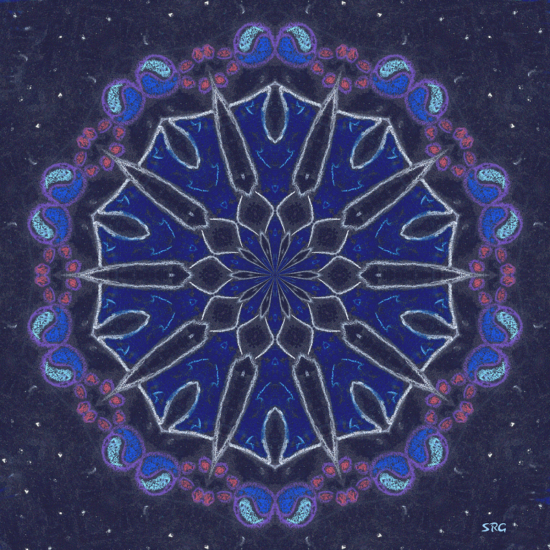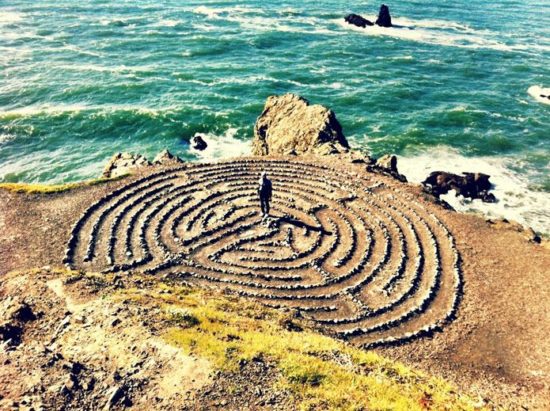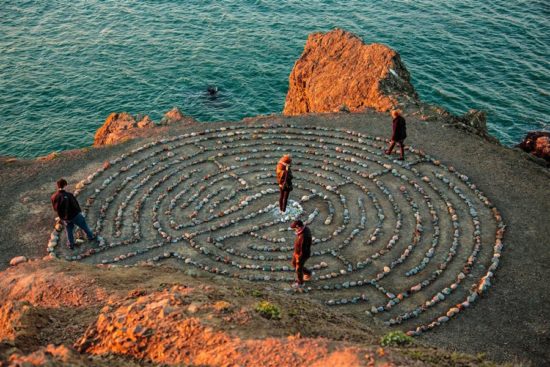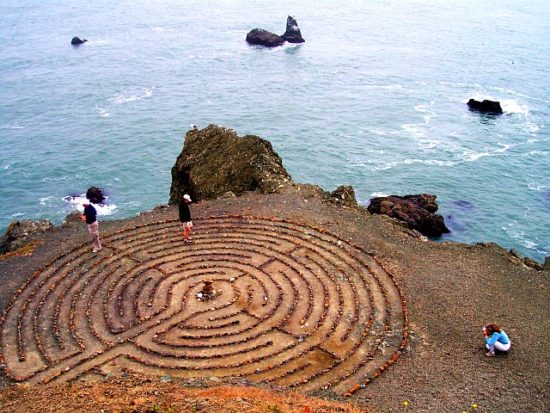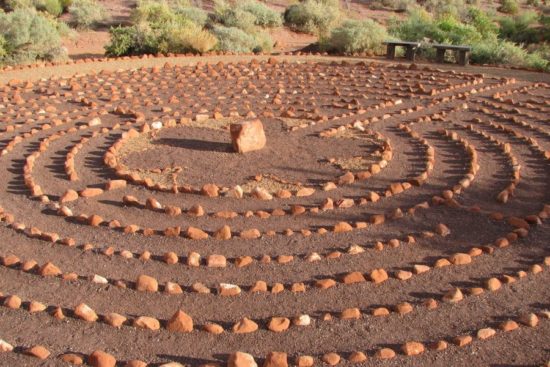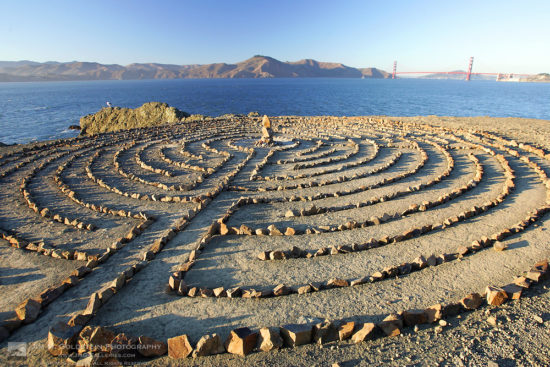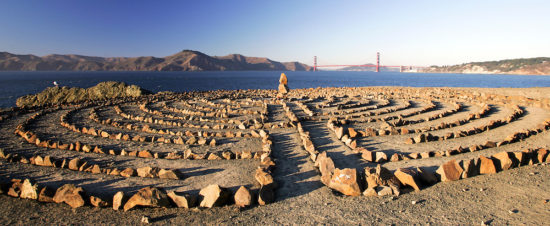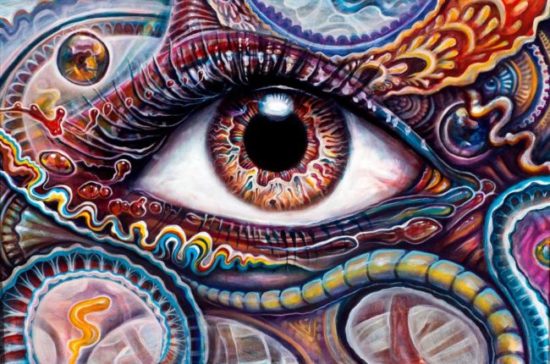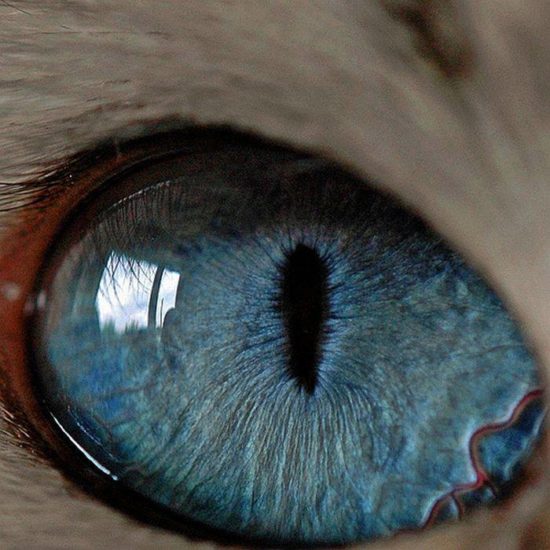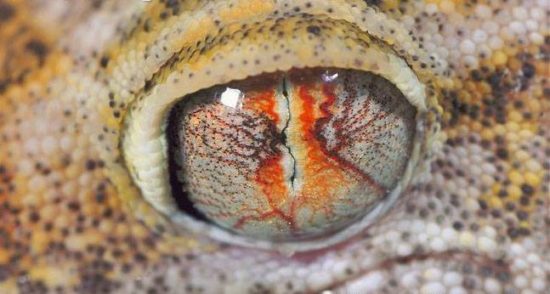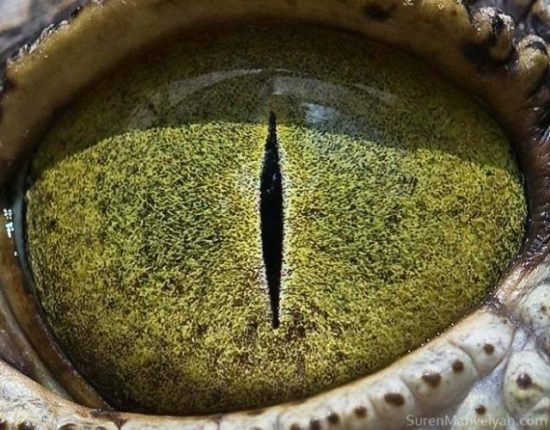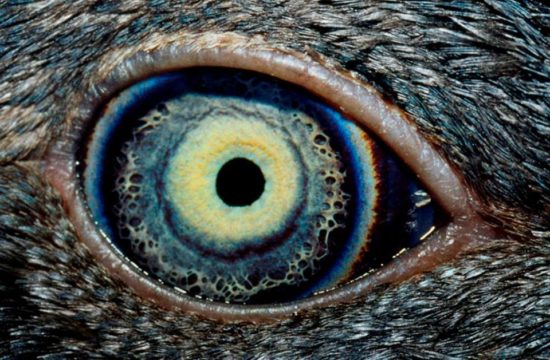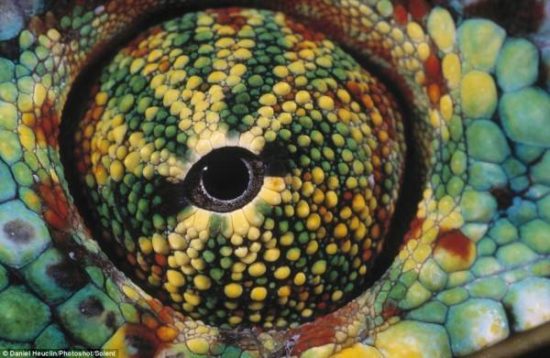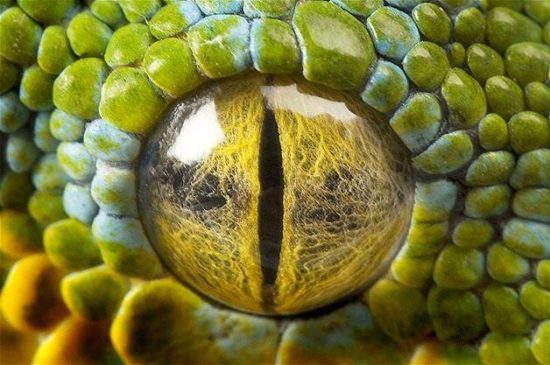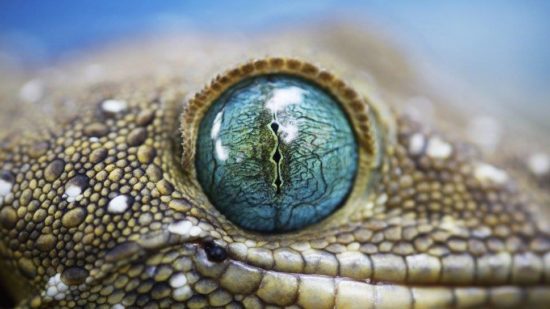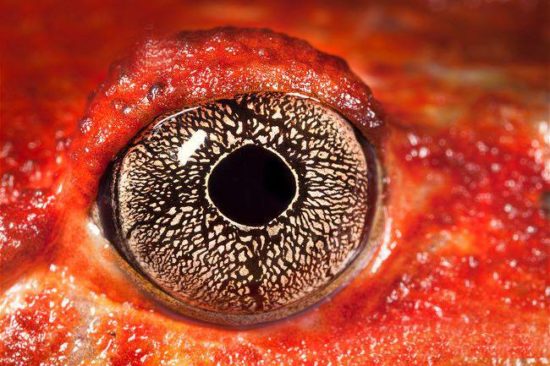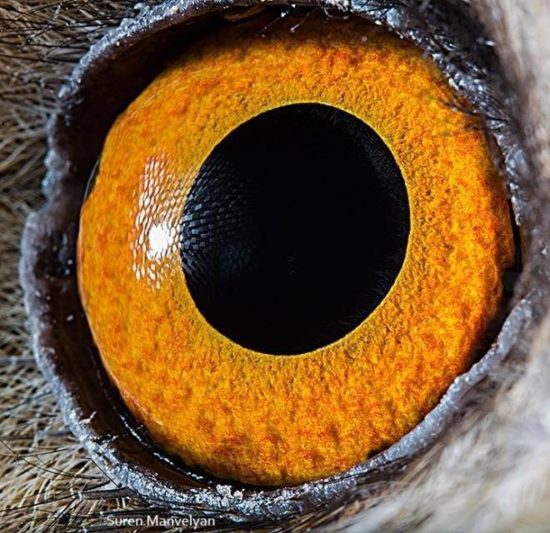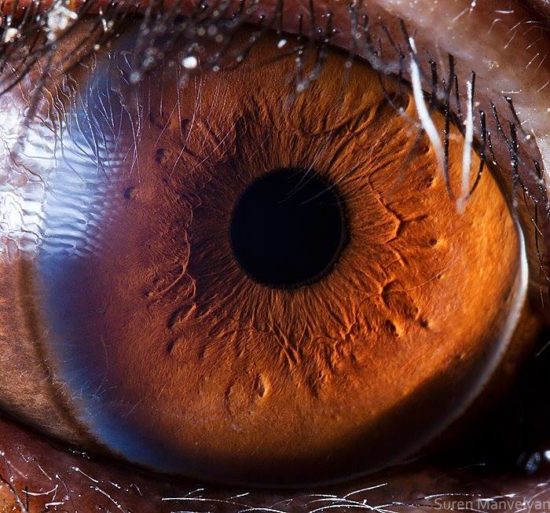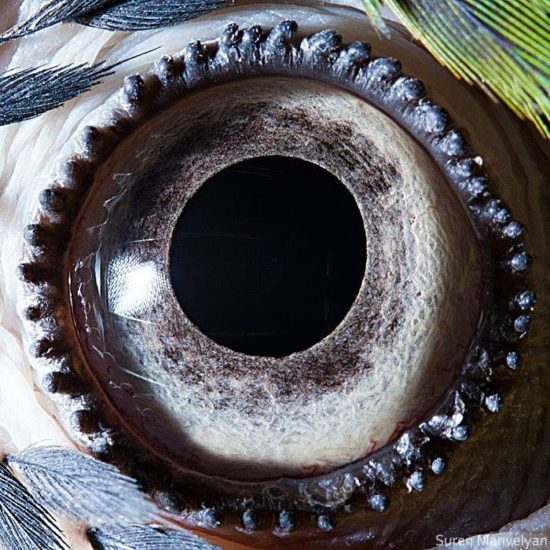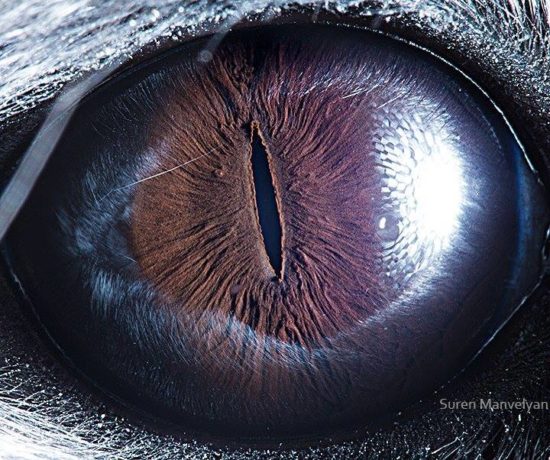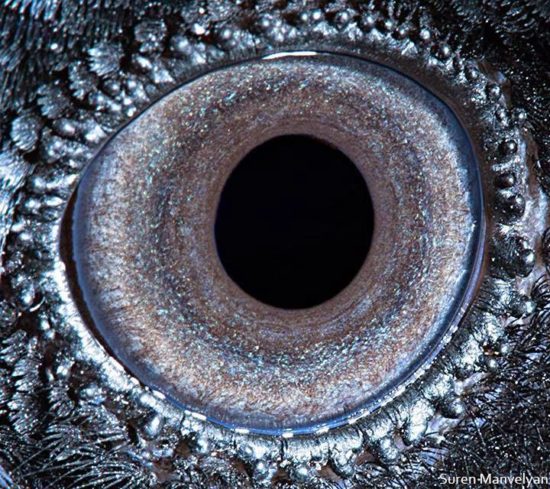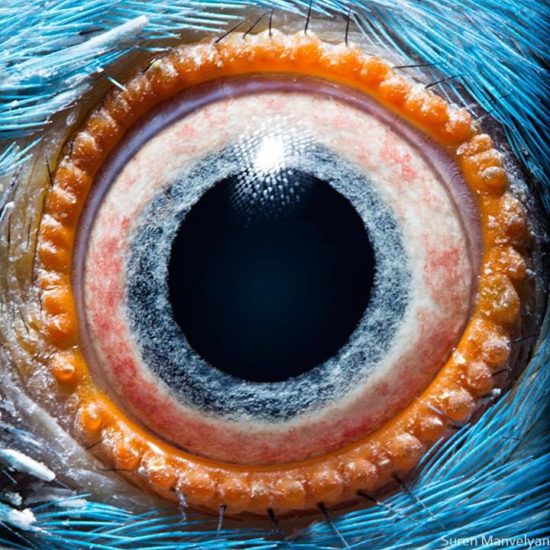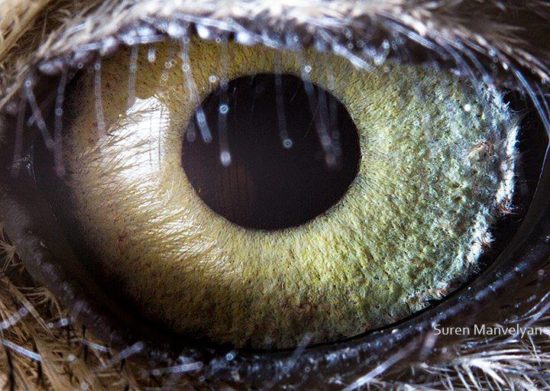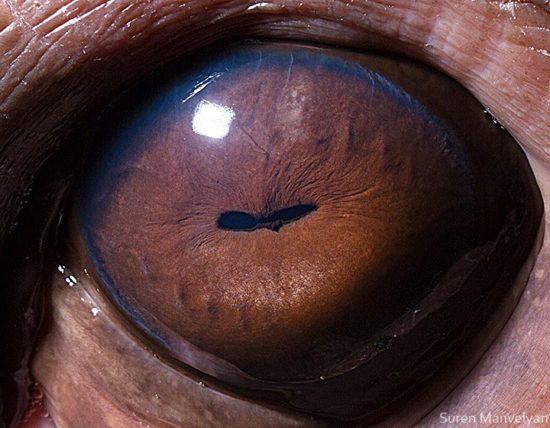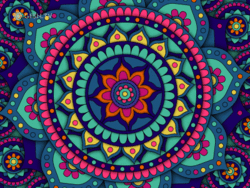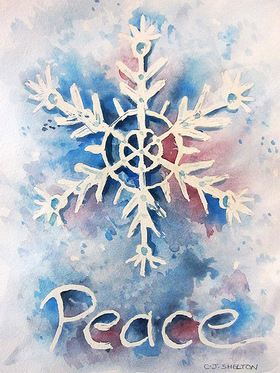A Labyrinth To Color
A Short History of the Labyrinth
The classic eleven circuit labyrinth was laid on the floor of Chartres Cathedral in about 1201. The oldest labyrinth associated with Christianity dates from the 4th Century and is found at Repartus, Orleansville in Algeria.
A labyrinth represents a spiral approach to the Divine, through the three-fold act of release (Purgation), awakening (Illumination), and return (Union). It intentionally evokes the character of a pilgrimage, in the Christian sense a pilgrimage to the Celestial City or Jerusalem. Everything that happens on the labyrinth is metaphor and so it serves as a metaphorical doorway to personal enlightenment. The labyrinth itself is an outward expression of the inward symbol of wholeness.
The classic Chartres labyrinth is an eleven circuit labyrinth which means it is made up of eleven concentric circles connected by thirty-four turns, twenty-eight of which are 180° switch-backs. There are ten axe-like labyrs which occur on the labyrinth. When viewing the labyrinth from above you’ll notice that the labyrs emanate from the labyrinth’s center to the right and left and out the top, thereby forming a Cross with the entry/exit path at the bottom.
The center of the labyrinth is a rosette, the symbol of Mary. It is also evocative of the lotus from Eastern traditions. This rosette has six pedals. One medieval tradition associated the pedals with mineral, vegetable, animal, human, angel, and unknown. The pedals may, however, represent many things collectively or personally.
Around the outside of the classic Chartres labyrinth are one hundred and fourteen lunations—113 cusps and 112 foils—(1 cusp and 2 foils are absent at the labyrinth gate). These are thought to represent the 28½ day lunar cycle and may have been used for as a calendar. The bones of the labyrinth are an invisible thirteen point star.
A Labyrinth Poem
Rows of ragged rocks outline a path for healing?
Brown, decaying leaves hug the winter ground – a blanket to transform?
The labyrinth awaits the sojourner–
almost calls her name–
Will you enter my simple boundaries
and journey my paths
One Step at a Time?
Straight ahead, yet winding and crooked
The curled road beckons to be trod —
reinforcing the uplifted
blessing the downtrodden
Maybe tears, maybe joy, maybe peace
One Step at a Time.
All who are heavy laden, come stand at the gate
All who are fragmented, place one foot down
and the other in front
All who find wonder in the commonplace,
Come travel the narrow rows
One Step at a Time.
Give up your burdens, your middle of the night worries
Lay a care on a silver, craggly rock as you pass
and move on to the next,
the monotony will soothe you
One Step at a Time.
Moving inward,
The trail winds in and out
Muscles untensing,
The walker’s job seems easy,
The cares tumble down
and hit the ground with imagined force
lightening the load on contact
One Step at a Time.
Step 48, step 49, many more follow
while curling toward center like a
snail into its shell
Motionless at last,
a wooden cross is sighted,
God’s presence overwhelms
and envelopes the inner sanctum–
His peace now a cloister
on the journey half over
One Step at a Time.
The pause to discover
new perspectives to ponder
fresh eyes, lightened heart
the world is a wonder
with steps unencumbered
the pilgrimage rewinds
One Step at a Time.
The breathing is slower
the feet touch down lower,
and easier on the road well-worn
The unknown, now familiar
the end is the beginning
the sad is now glory
All happening unexpectedly
One Step at a Time.
A twist inward
A transformation outward
A fresh view from fatigued eyes
All part of a simple design
of much complexity
with the whole greater
than the sum of the steps
All the while traveling
One Step at a Time.
~Suzanne Moody
Visiting Labyrinths
What is a Labyrinth?
The labyrinth is an ancient spiritual tool that has been used throughout the world for over four thousand years. A labyrinth is a circuitous path with one entrance point that leads through a series of switch-backs to its center.
A labyrinth is not a maze. A maze, by contrast, has dead-ends and blind alley ways. Its intention is confusion and mystery. The labyrinth, when followed, leads eventually and without making choices to the center. It is designed for one to find his/her way. The labyrinth may be thought of as a map, but as such it should not be confused with the territory that it represents, that is the inner Being and its relationship with Spirit.
Your Life Is A Sacred Journey
Your life is a sacred journey. And it is about change, growth, discovery, movement, transformation, continuously expanding your vision of what is possible, stretching your soul, learning to see clearly and deeply, listening to your intuition, taking courageous challenges at every step along the way. You are on the path… exactly where you are meant to be right now… And from here, you can only go forward, shaping your life story into a magnificent tale of triumph, of healing of courage, of beauty, of wisdom, of power, of dignity, and of love.
Sources:
- Quote by ~Caroline Adams
- Journey Mandala by ~Shirley Gibson
The Land’s End Labyrinth
Seeing Things As They Are
God’s Eye
Animal Eyes
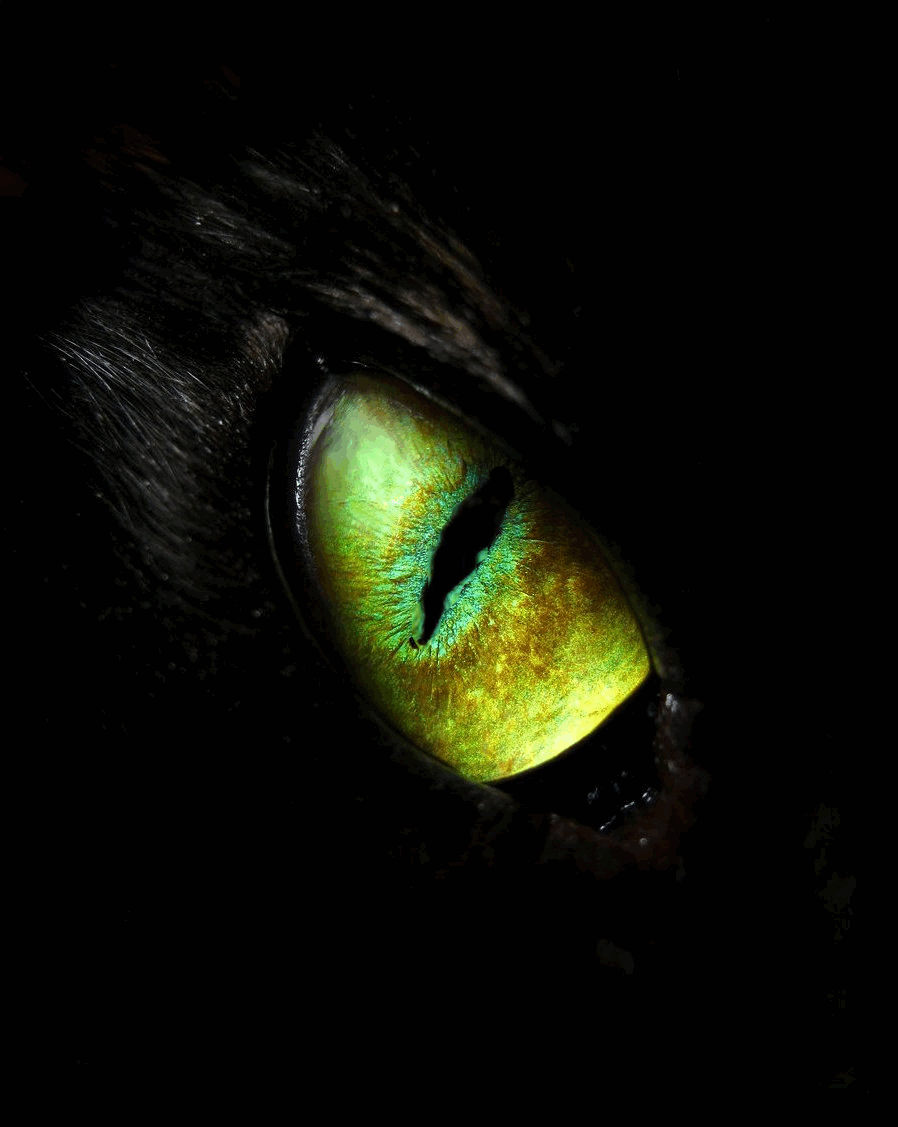
There’s a lot that can be inferred from looking at someone’s eyes. After all, they are the windows to the soul. But when it comes to animals, you can learn a lot more about them than just their personality.
These animals all have unique, highly specialized eyes. Can you guess which animal each belongs to without reading the caption?
Cats can see 8 times better than humans.
Because geckos are nocturnal, their eyes are more light-sensitive, with the pupils constricting when they hit light.
A crocodile’s eyes can adapt to twilight or nighttime.
Penguins have eyes that allow them to see better underwater.
Chameleons can rotate their eyes 360 degrees independently of one another!
A python’s eye is mesmerizing.
A tokay gecko has transparent eyelids.
This tomato frog has many different types of optic nerves.
Marine mammals, like this whale, have limited vision because of the way the water refracts light.
Owls cannot easily see from close distances, but they are excellent from farther away, particularly in low light.
The octopus has binocular vision.
Just like humans, chimpanzees have binocular vision.
Lemurs have such excellent night vision that they can still make out colors in almost complete darkness.
Macaws see everything in ultraviolet vision.
A chinchilla has truly striking eyes. It looks like a landscape!
A crow’s eyes almost look like they’re frosted over. Chilling.
Parrots’ ultraviolet vision allow them to see the maturation of fruits.
Unlike other birds, the athene noctua owl is able to blink one eye and turn its head three-quarters of its total rotation.
This hippo’s eye is adapted for nighttime.
Found at Honest To Paws
